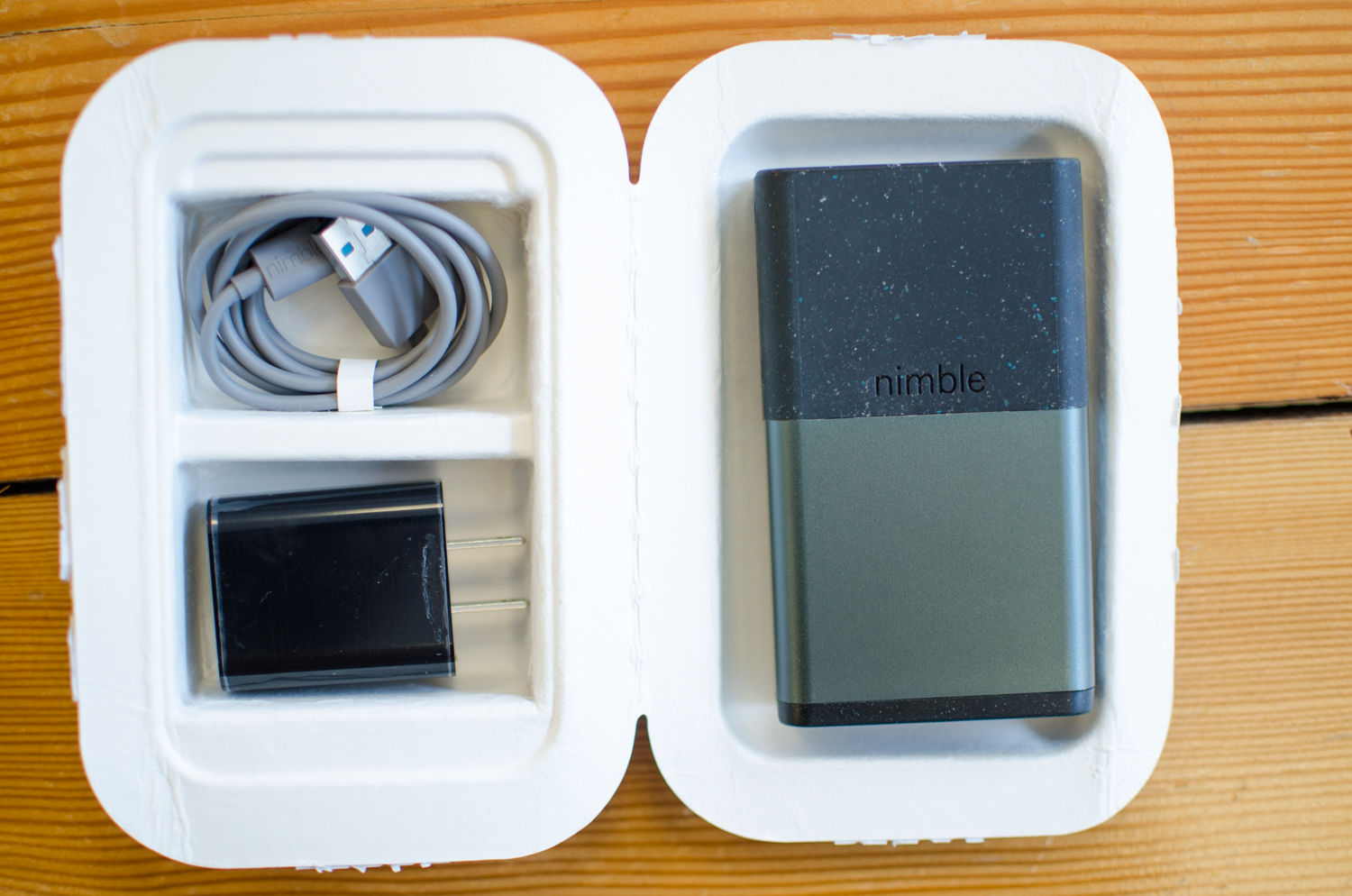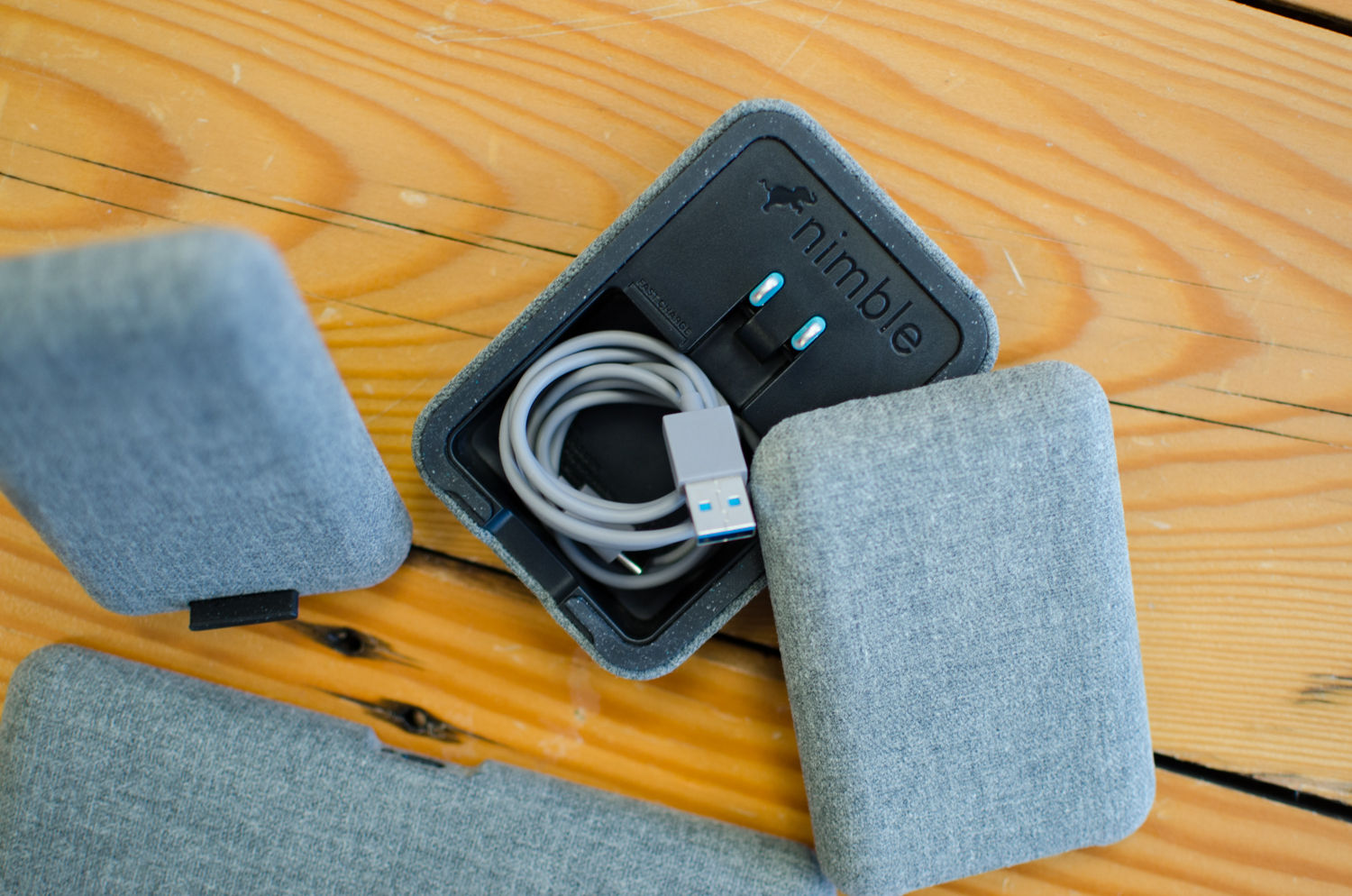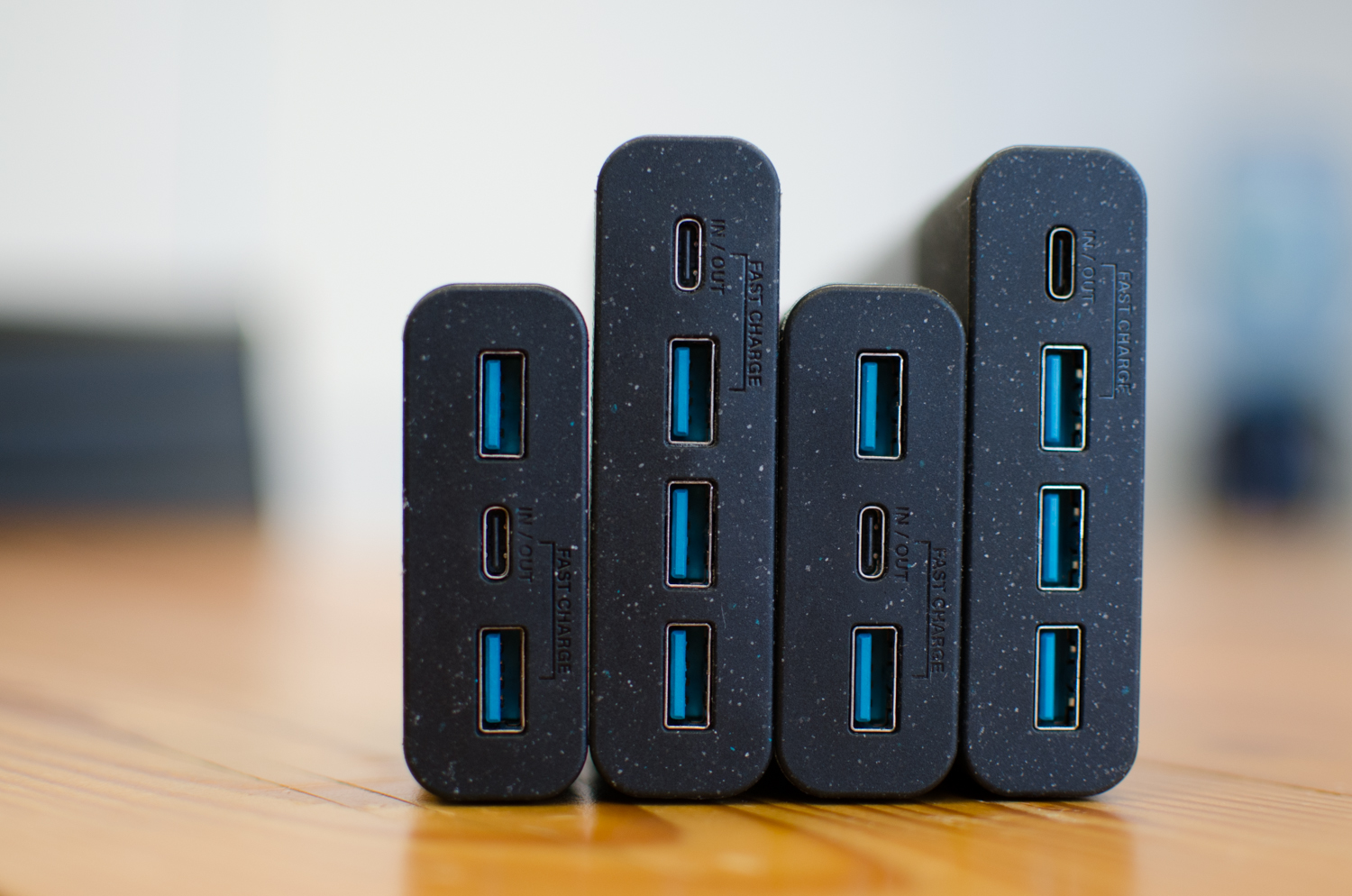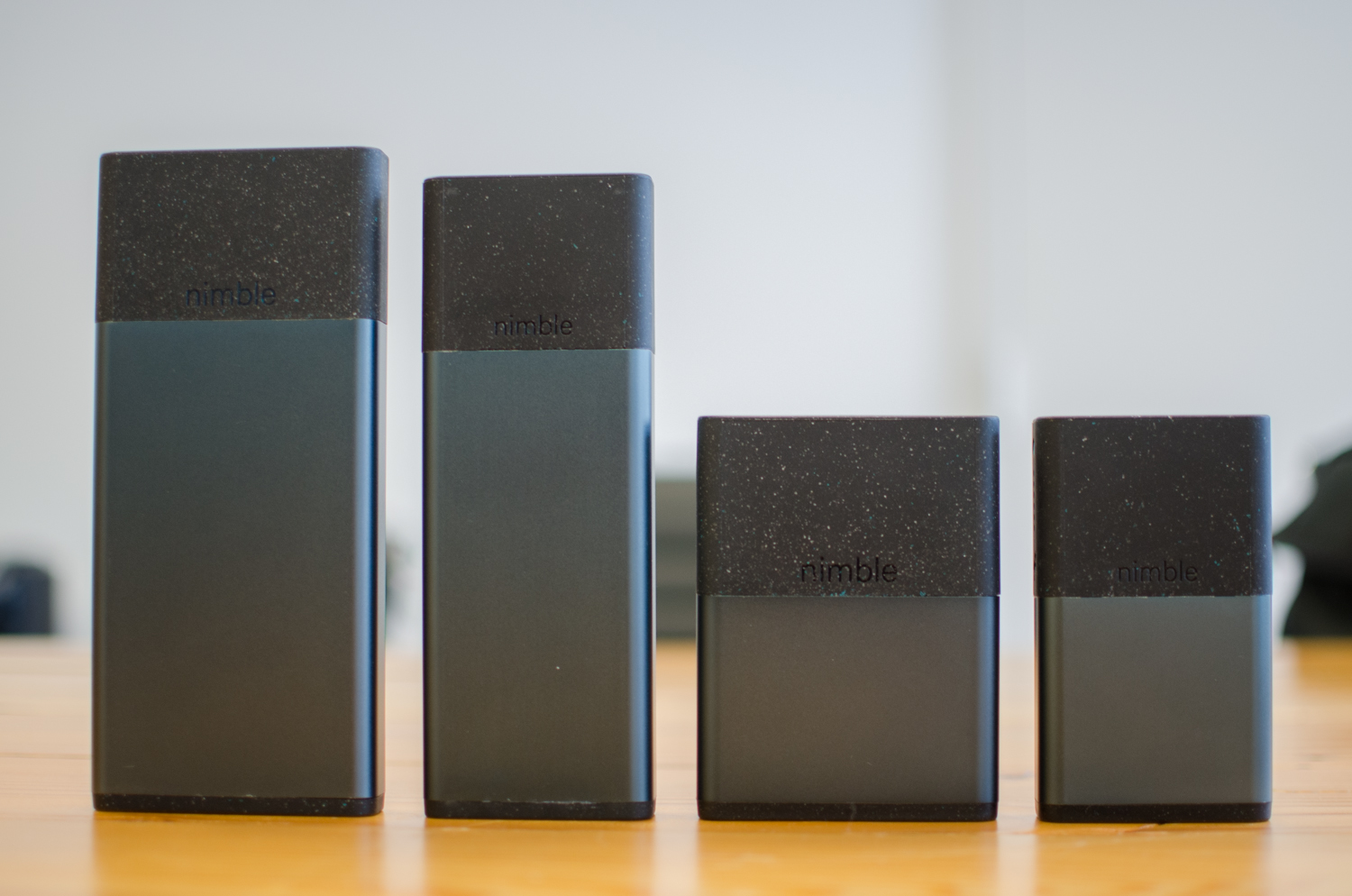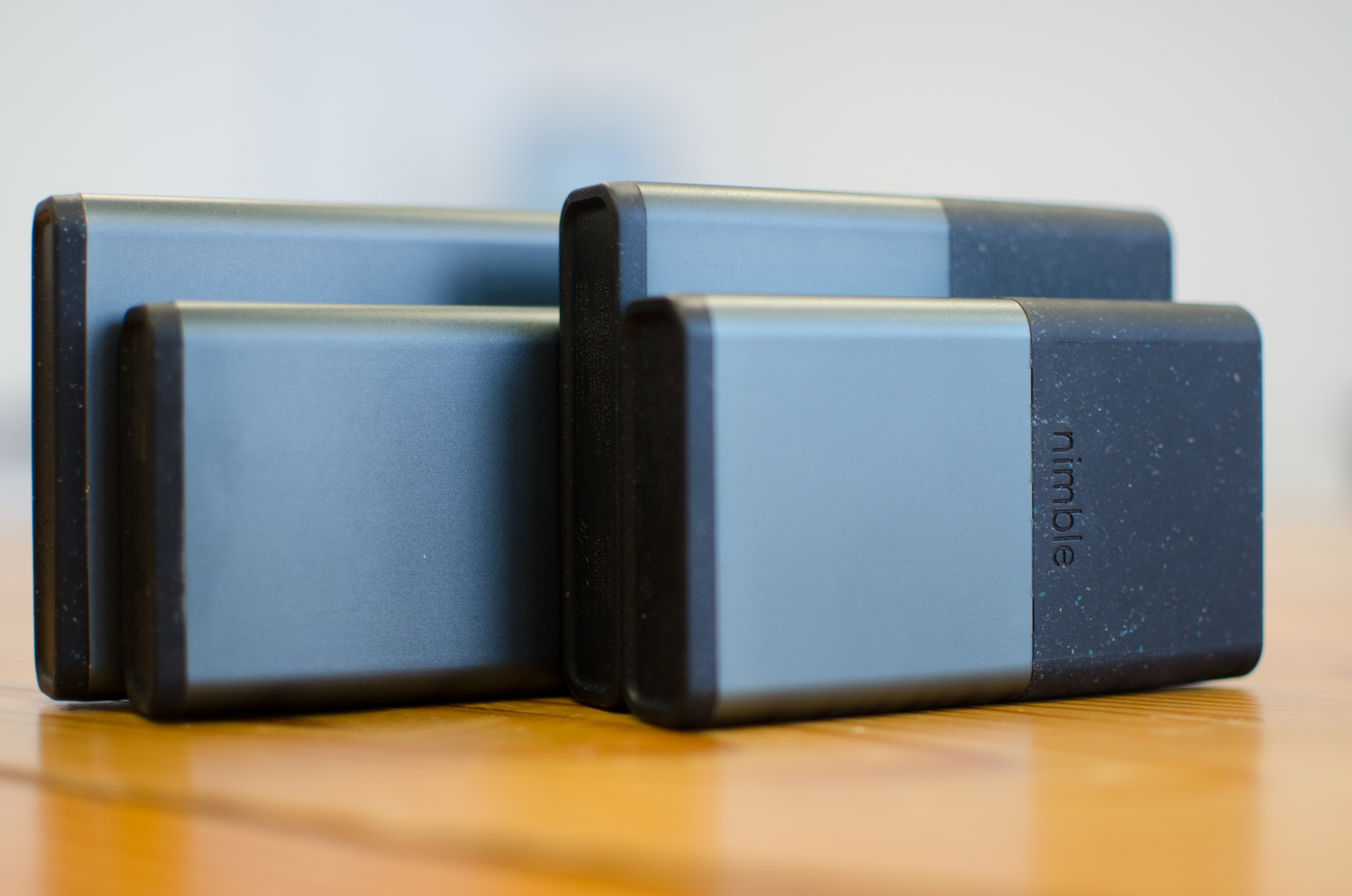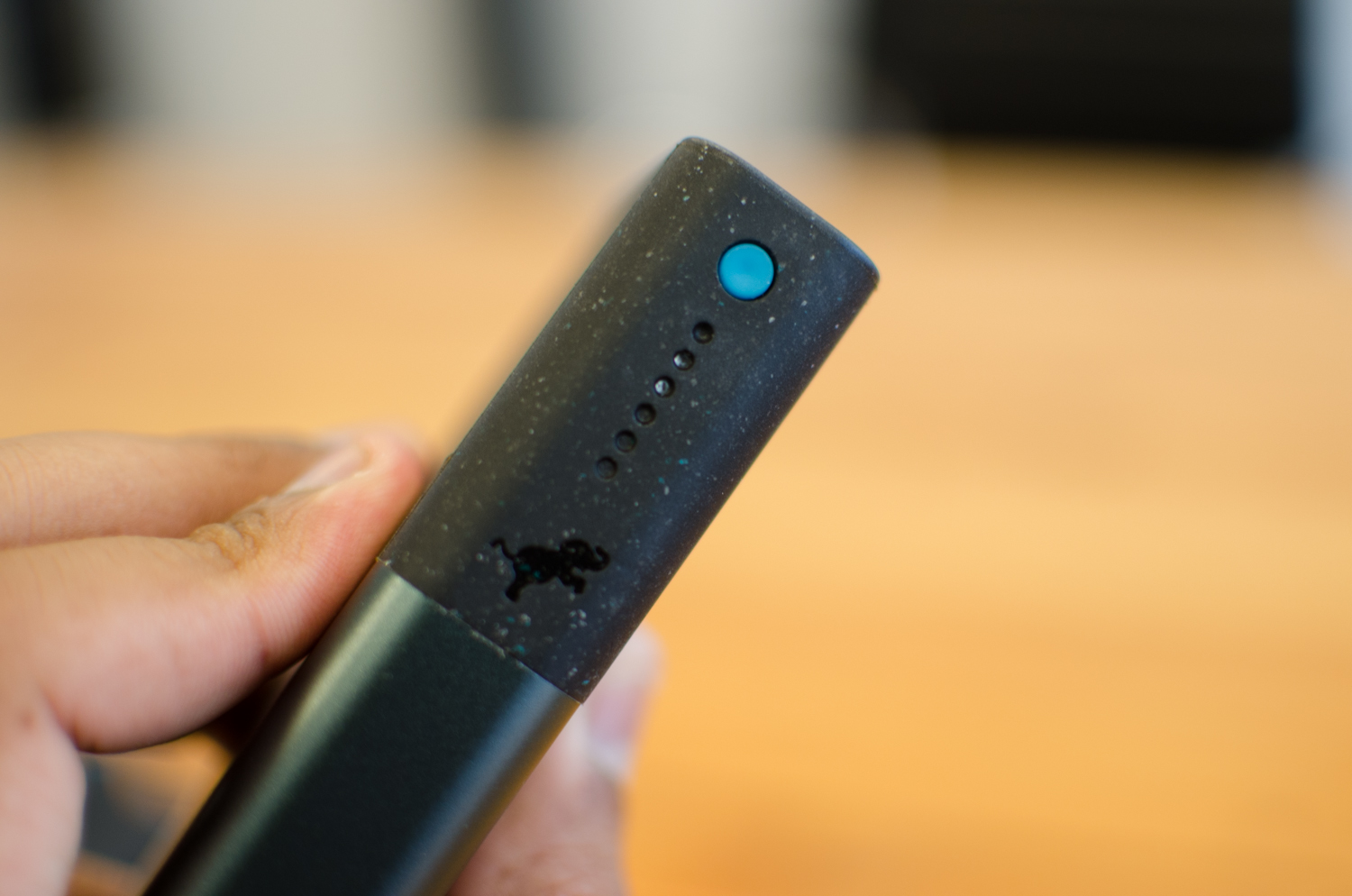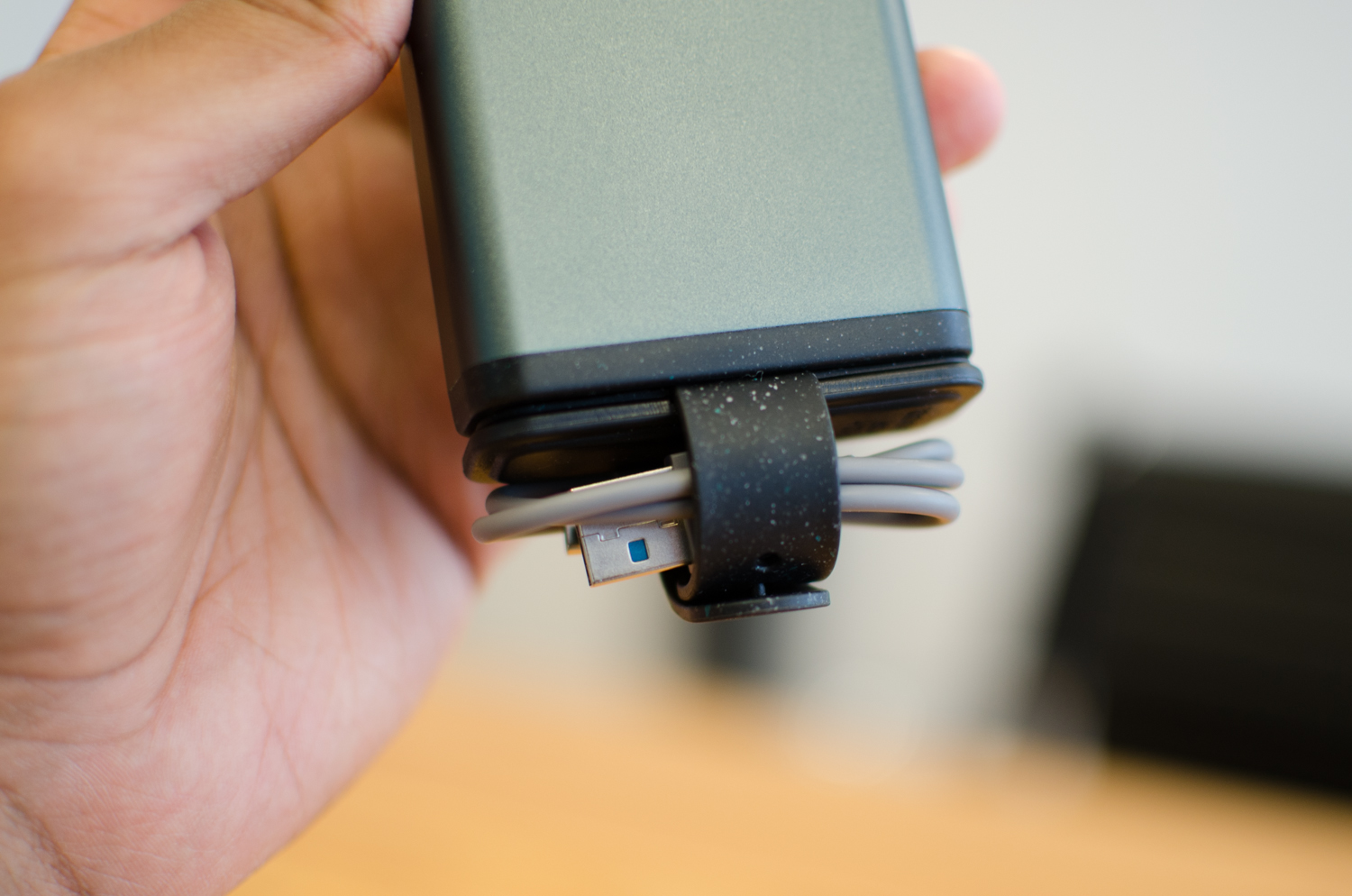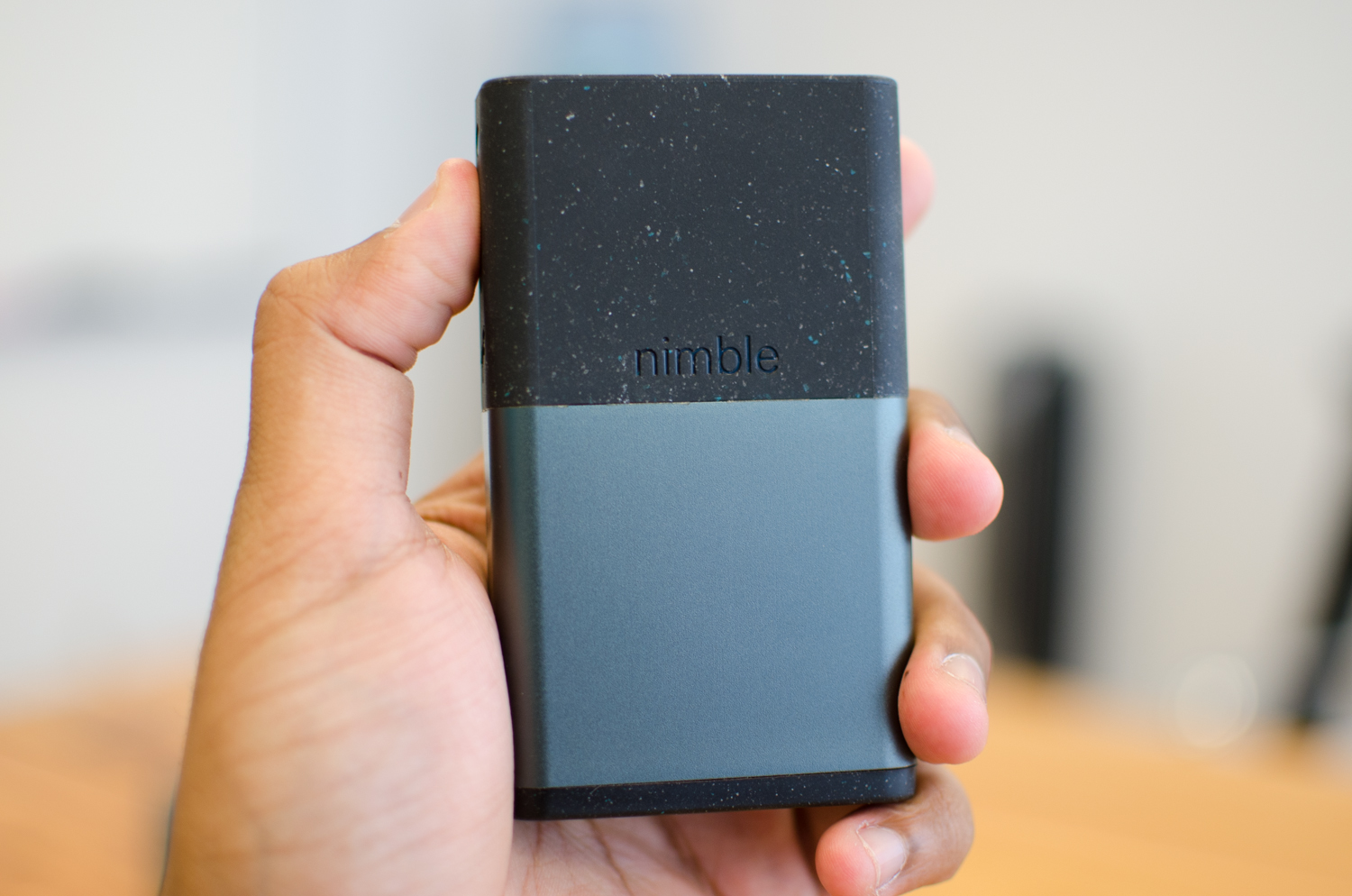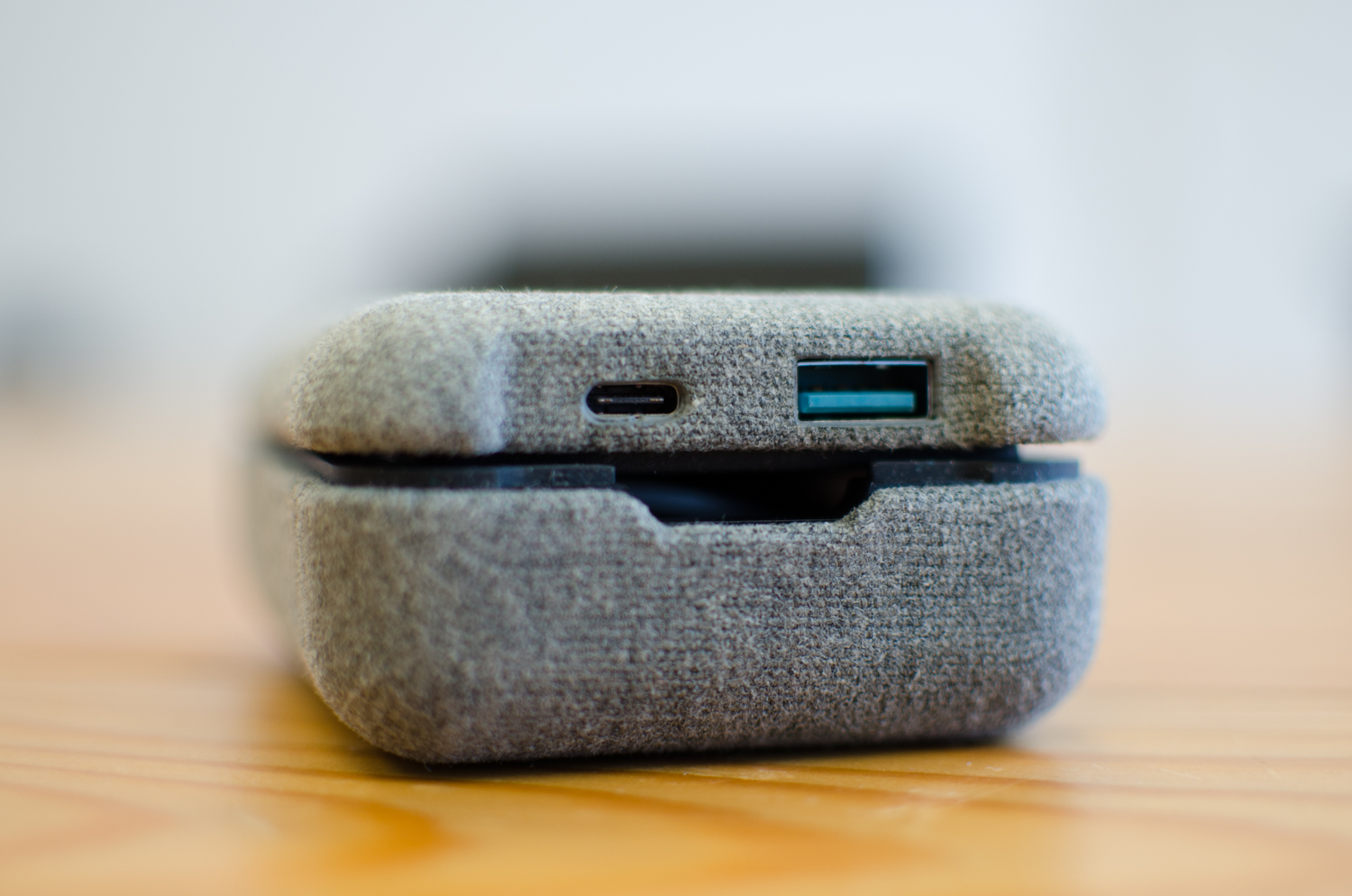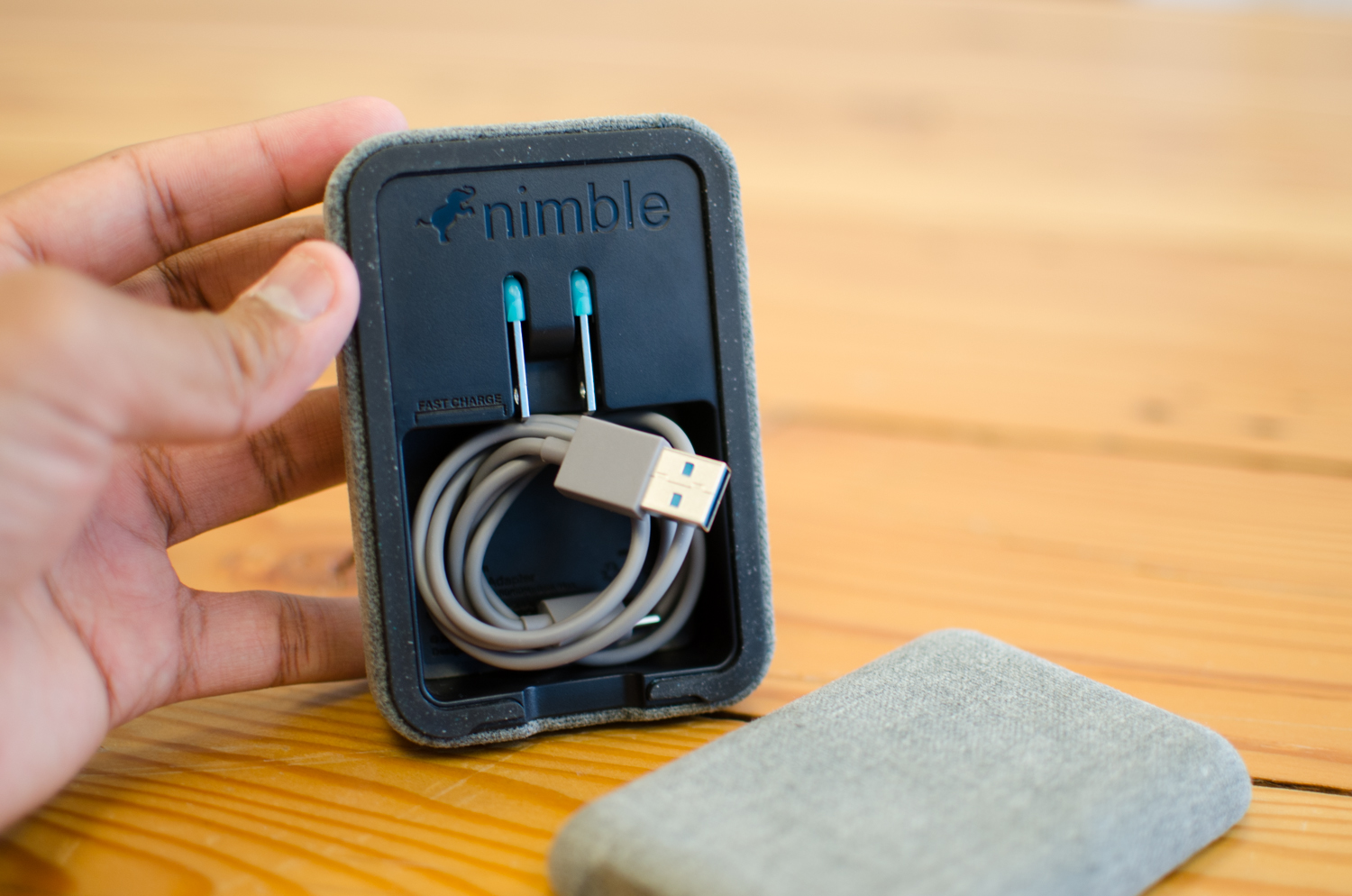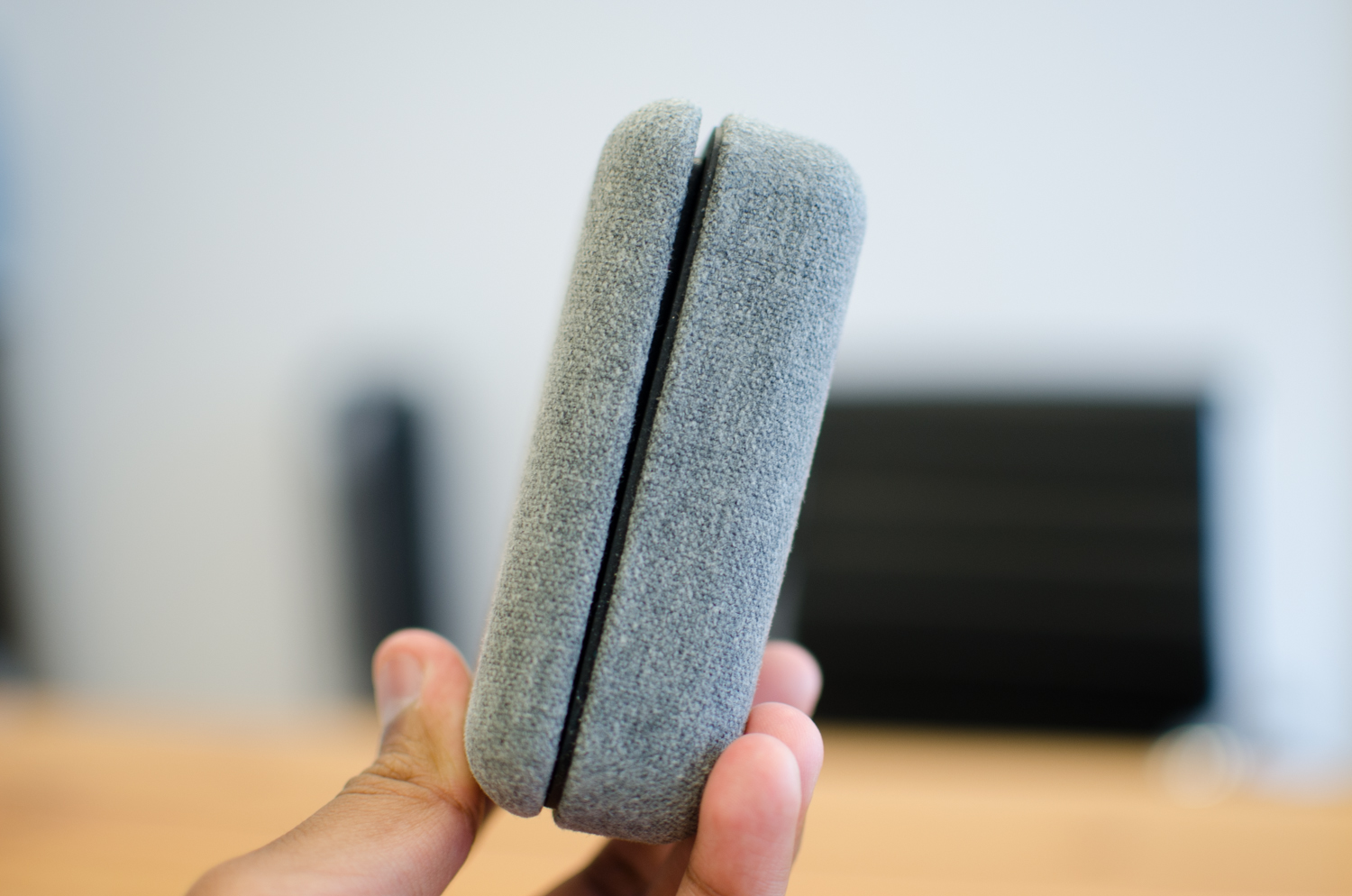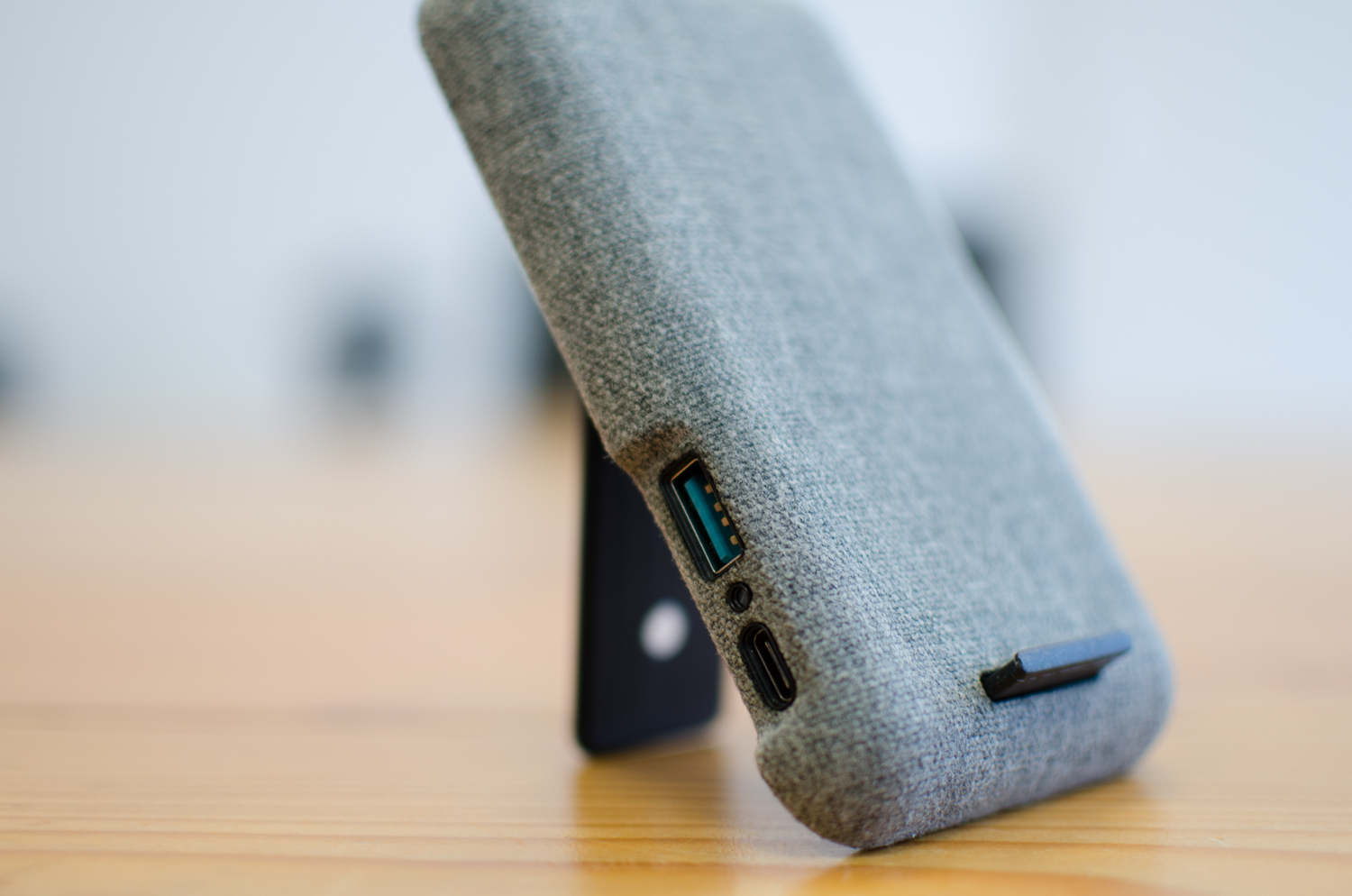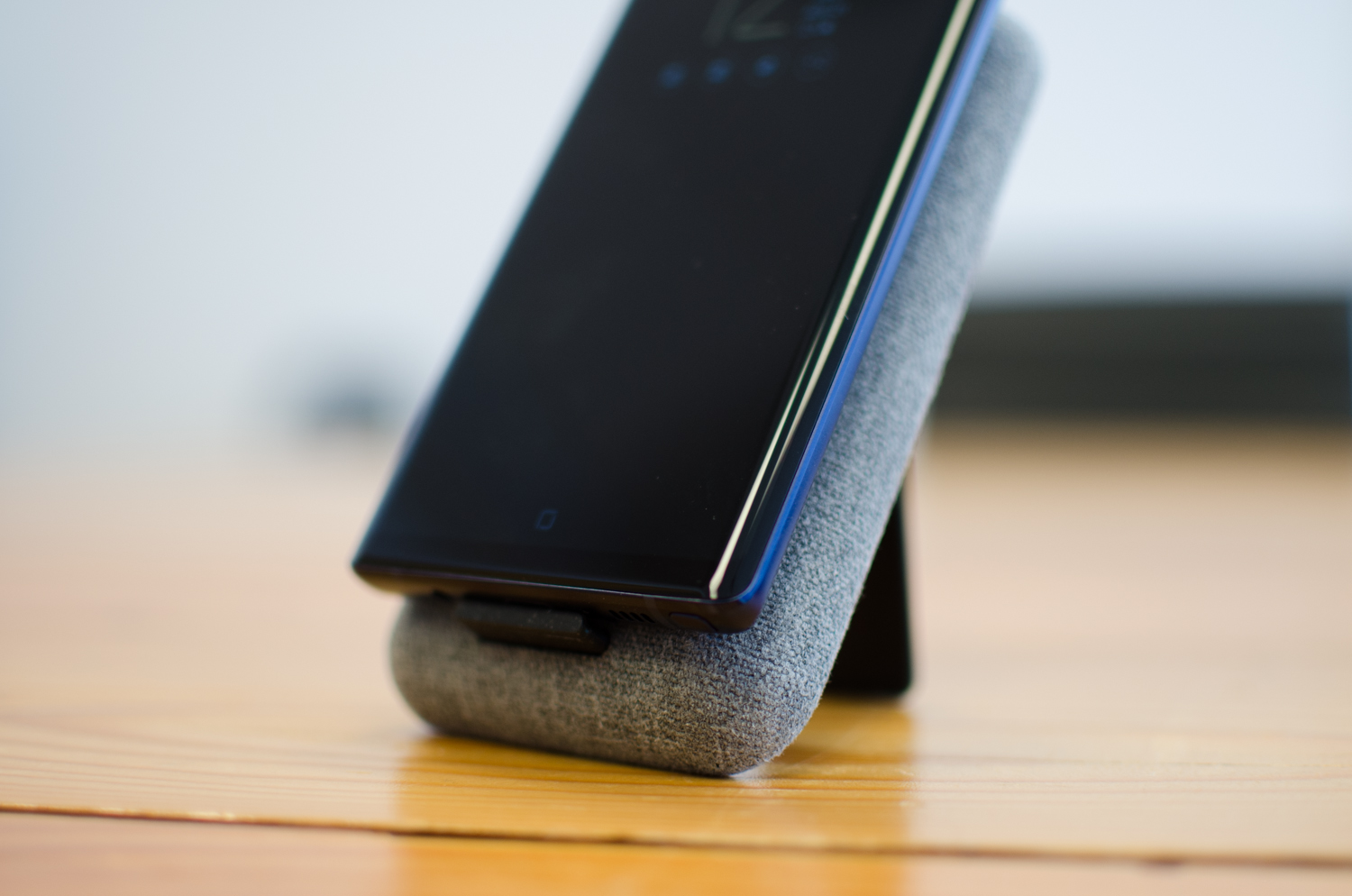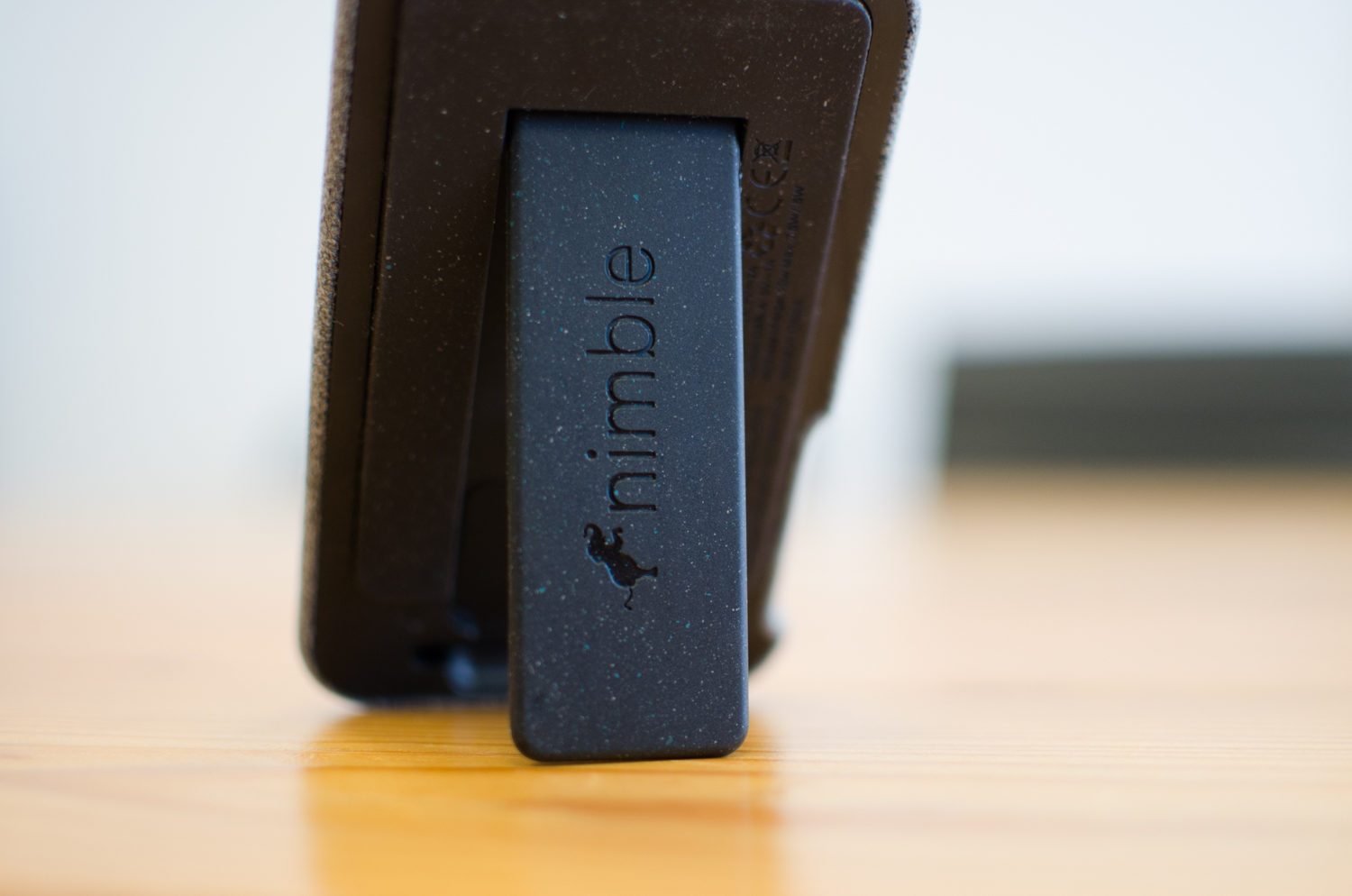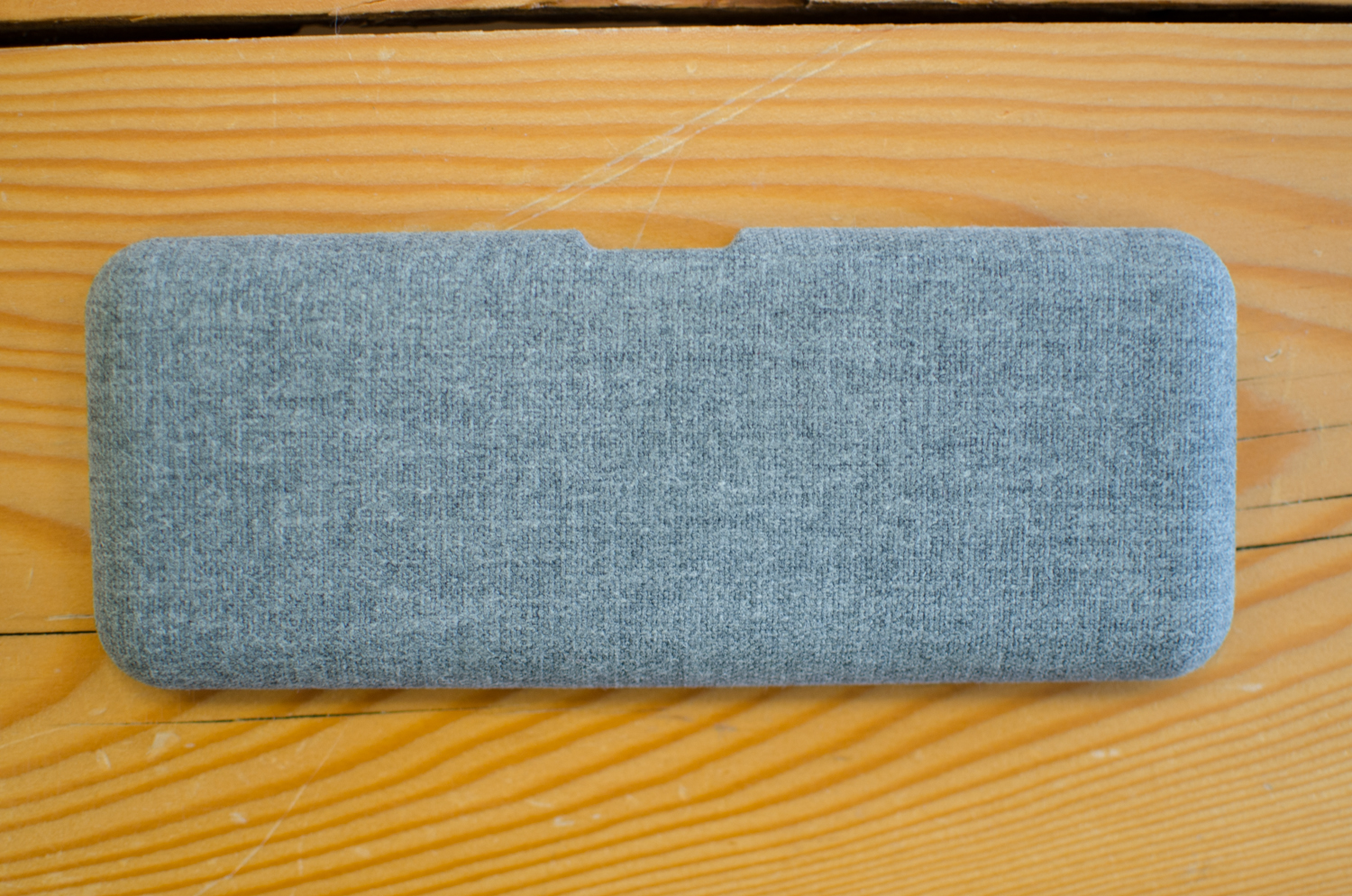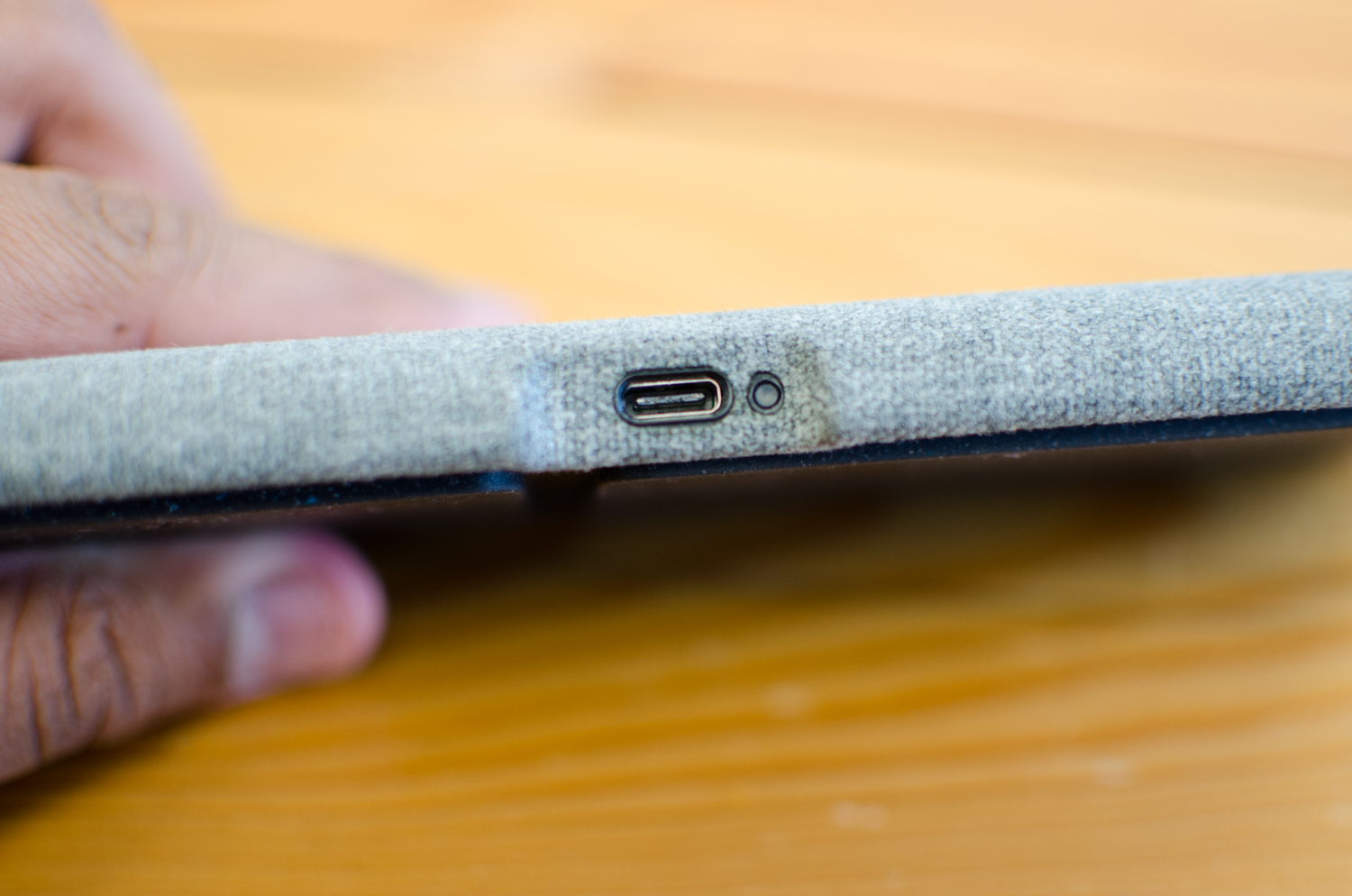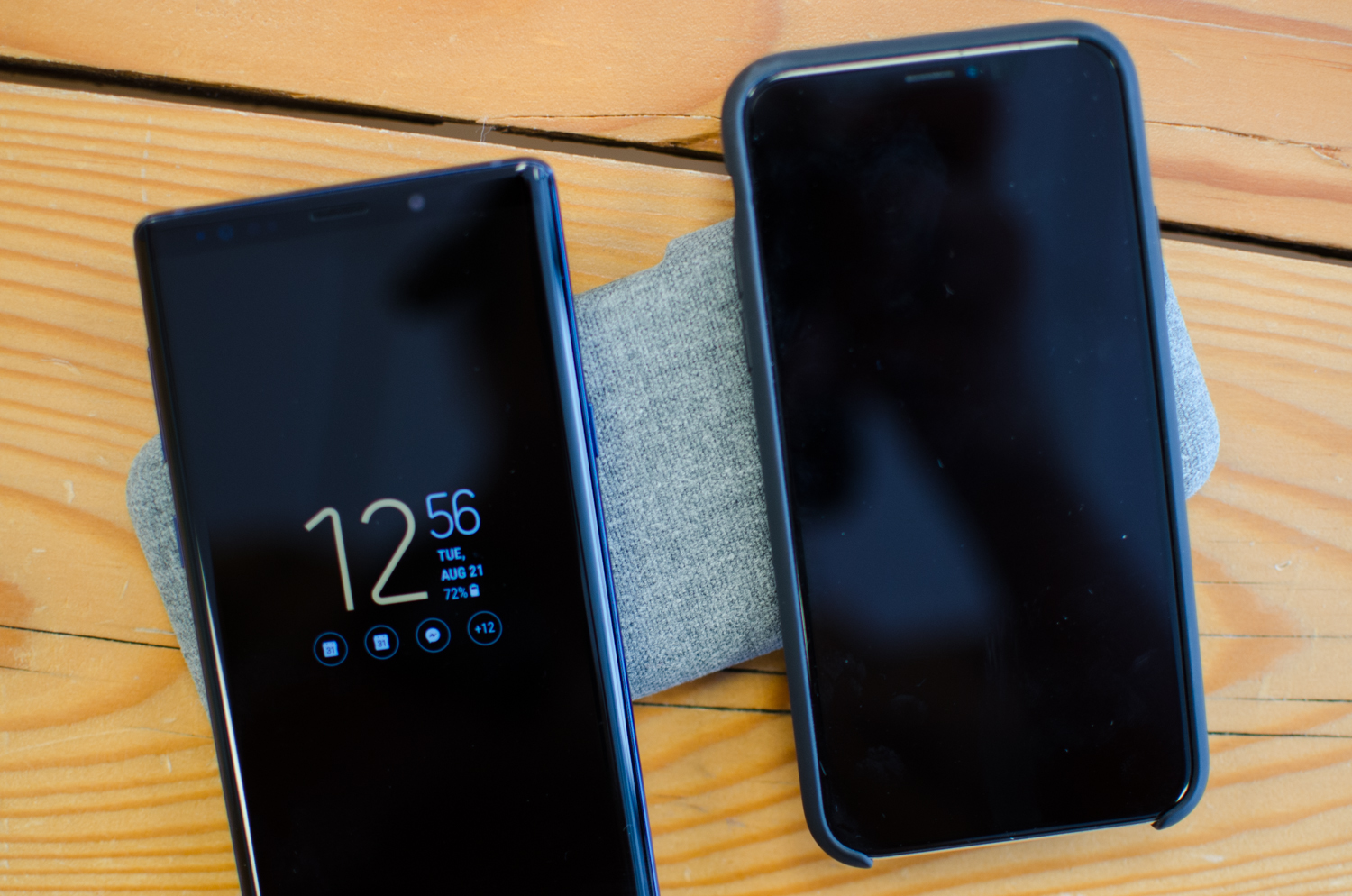Scroll through Amazon and you’ll find a countless number of companies churning out portable battery packs and wireless charging pads. Nimble is yet another, but it stands out from the crowd for two reasons: It places a heavy emphasis on building eco-friendly products made of sustainable materials, and it’s founded by former Mophie executives.
How is Nimble eco-friendly?
Nimble, which launched on August 29, 2018, is starting off with two categories: Wireless charging pads and portable battery packs. The products are made of “plant-based bioplastics,” with the wireless chargers utilizing 100-percent organic hemp and recycled polyester. There’s also recycled aluminum involved, no paint or toxic substances, and the products have “natural mineral crystals” mixed in with the thermoplastic elastomer (TPE), which delivers a unique pattern to every device. Even the packaging is made of 100-percent recycled scrap paper, and the company said it’s completely compostable.
A responsible approach to same-day delivery
But lowering your impact doesn’t just mean using sustainable materials — it also means cutting down on carbon emissions too. One of the biggest challenges Nimble faced as an eco-friendly company was the impact of shipping customer orders from its headquarters in California. Making sure customers got their orders quickly often means relying on air transport, which is fast, but costly from a carbon footprint perspective.
Thankfully, Nimble claims to have cracked the code, and from May 2, 2019, customers in New York City and Greater L.A. can benefit from same-day delivery services that literally don’t cost the Earth. How has Nimble managed this? By placing products in a number of smaller hubs, deliveries are able to be made within the same day, so if you place an order before 4 p.m., it’ll be with you by 9 p.m. that same day. By cutting down on its use of air freight from its California location, Nimble claims it’s been able to cut its carbon footprint by 75%.
Nimble’s same-day delivering is coming first to customers in New York City and in Los Angeles and Orange County. Nimble also is working on expanding its same-day delivery nationwide, stating the service will be coming soon.
An eco-friendly approach that doesn’t compromise on style
Nimble co-founders Ross Howe, Kevin Malinowski, and Jon Bradley — all ex-Mophie executives — wanted to introduce a new aesthetic into the accessory category, with designs that blend into the home and don’t look too “tech-y.”
“In addition to the best specs available out there right now and the considered approach for the packaging and materials used — and the responsible ethical approach we took — we also focused on unique feature sets, like little things that other people making similar products haven’t really thought about that adds value for the customer,” Malinowski, head of brand and marketing at Nimble, told Digital Trends.
Here’s a look at the first products from the startup.
Wireless charging pads
- 1. Nimble Wireless Pad with Travel Kit.
- 2. Nimble Wireless Pad Travel Kit.
- 3. Nimble Wireless Stand.
- 4. Nimble Wireless Dual Pad.
The wireless charging pads are wrapped with a 100-percent hemp material that looks elegant, with TPE bases that are quite grippy. They come in either charcoal black or gray — the latter color is what’s pictured. All of them support the Qi wireless standard, and come with a Quick Charge 3.0 USB wall charger, as well as a USB-A to USB-C cable.
The Nimble Wireless Pad is a small rectangular pad with rounded corners, and it’s the cheapest on the list at $40. It’s capable of charging compatible iPhone devices at 7.5 watts, and Android phones at 10 watts. The fast-charging USB Type-C port is what you’ll use to plug the pad to the wall outlet, but there’s also an additional USB-A port in case you want to charge a second device.
In the Nimble Wireless Travel Kit, you get the same Nimble Wireless Pad as well as a dual USB wall charger. With the wall charger plugged in and connected to the Wireless Pad, you’ll now have two extra USB-A ports to charge other devices. The wall charger has space to store one cable, and it magnetically attaches to the Wireless Pad for carrying convenience. The Travel Kit includes the Wireless Pad and costs a little more at $60.
Then there’s the Nimble Wireless Stand, which lets you prop up your device vertically or horizontally while charging. It has the same specs and ports as the standard Wireless Pad, and it costs $50. The Nimble Wireless Dual Pad is the more interesting device of the lot, allowing you to wirelessly charge two devices at once. They’ll have to lay flat, though, unlike Samsung’s new Wireless Charger Duo.
Since there are only two charging coils inside, you’ll need to make sure you place the devices correctly to ensure they are charging — something you won’t need to worry about with Apple’s upcoming AirPower charging pad, which we may see at the company’s September event. The Dual Pad also costs $50.
Battery packs
The battery packs are a little more versatile, as they allow you to charge a wider variety of devices, and they’re easy to carry on the go. Nimble has four portable chargers at varying capacities, all housed in recycled aluminum: The smallest is the 10,000mAh battery, followed by a 13,000mAh, 20,000mAh, and 26,000mAh capacity.
The 13,000mAh and 26,000mAh chargers have three USB-A ports, whereas the other two only have two — but all of them have at least one that supports Qualcomm’s Quick Charge 3.0 fast-charging technology. All come with an 18-watt USB-C PD port that you can use to recharge the battery or another device as well.
What’s unique are the LED lights — they not only tell you how much juice is left in the pack, but an extra LED light confirms when a device is utilizing fast charging. Most Android smartphones let the user know on the lock screen, but there’s no way to tell on other products like iPhones; this makes it handy when you want to make sure the device is charging as fast as possible. All the battery packs also come with a cable management strap that magnetically attaches to the bottom of the battery, which helps keep things tidy.
The 10,000mAh battery costs $50, and pricing ramps up all the way to $100 for the 26,000mAh battery.
The Tech Recovery Project
The choice to use these eco-friendly materials wasn’t easy, as Howe said manufacturers pushed back, suggesting they use materials everyone else is using.
“How come no one is sourcing better materials, low-impact materials, thinking about the environment?”
“How come no one is sourcing better materials, low-impact materials, thinking about the environment?” Malinowski said. “They’re doing it in shoes, they’re doing it food, they’re doing it in clothing … every other industry has taken a more ethical approach except consumer tech. So we’re like, ‘Wow this is a gaping hole and somebody has to enter and kick-start the new way of doing things.'”
Doubling down on the company’s goal of reducing electronic waste, every product you buy from Nimble comes with a pouch you can use to send any used electronics lying around. Nimble claims it will “recycle up to one pound of e-waste for every product sold,” and it has partnered with Homeboy Electronics Recycling to make it all work. Shipping is covered, too; you just need to nab a label from Nimble’s website.
While Nimble is starting out with battery packs and wireless charging pads, it’s planning on unveiling products in completely different categories early next year — and they will still maintain a heavy focus on using sustainable and recycled materials. The new portable batteries and wireless charging pads are available from Nimble’s website, and they’ll be available through Amazon soon.
Updated on May 2, 2019: Nimble is now offering same-day delivery to certain parts of the U.S.
Editors' Recommendations
- This retro battery pack is way cooler than it has any right to be
- Apple’s official MagSafe Battery Pack for the iPhone 12 is on sale for $99
- Amazon zaps prices on Anker iPhone wireless chargers, USB, and portable chargers
